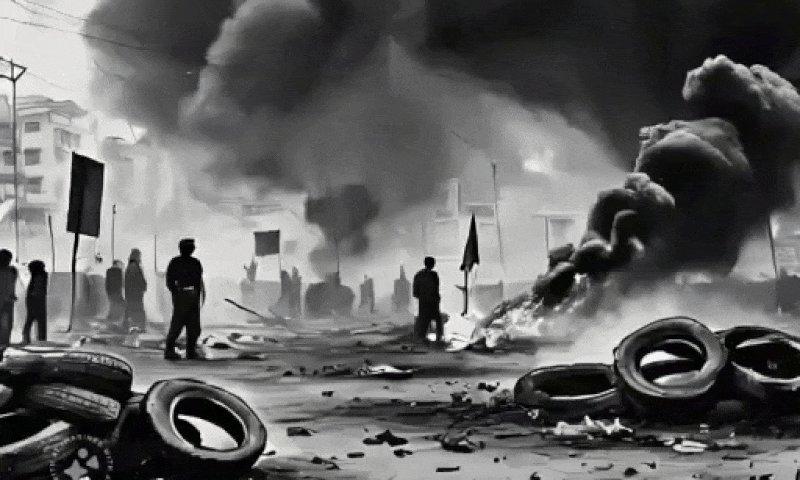
WASHINGTON: The distrust and fear that divide India and Pakistan can also be seen from the space — a bright orange line snaking through hundreds of miles across the earth’s surface.
The line occupies a centre space in an image of the Indo-Gangetic plain the US National Aeronautics and Space Administration (Nasa) released this week.
The crew of Nasa’s International Space Station Expedition 28 took the picture on Aug 21.
Expedition 28 is the current, long-duration expedition to the International Space Station, launched from Baikonur Cosmodrome in Kazakhstan on May 23 and is expected to return to the earth later this month.
One of the images the crew sent to the earth station shows a line of lights, with a distinctly orange hue, snaking across the centre of the picture.
It appears to be more continuous and brighter than most highways in the view. This is the fenced and floodlit border zone between India and Pakistan.
The ISS crew took the image with a Nikon D3S digital camera, using a 16 mm lens, which provides the wide field of view, as the International Space Station was tracking towards the southeast across India.
This space picture of northern India and Pakistan also shows numerous cities, large and small.
Of the hundreds of clusters, the largest are those of Islamabad and New Delhi, separated by 700 kilometres, and Lahore. The lines of major highways connecting the cities also stand out.
The Himalayas, nature’s indelible mark on the Indo-Gangetic plain, is also visible, even at night, showing its subtle but definite presence from the clouds.
Allama Iqbal aptly described this towering presence on the subcontinent’s horizon as the “rampart of the realm of Hindustan”, noting that “the sky bows down to kiss your forehead.”
Deprived of “the turban of honour” that, in Iqbal’s words, crowns the snow-covered Himalayas, the humans decorated their boundary wall with thousands of electric lights that hurt eyes.
Gracefully, Pakistan has no contribution to erecting these hideous floodlights across the border.
They were put by the Indian government.
In 2003, the Indian government sanctioned a proposal to fence and illuminate the border to prevent smuggling and arms trafficking.
In total, the Indians plan to cover 2009 km of the 2900 km India-Pakistan border with floodlights.
Officials have so far erected floodlights along 460 km of border in Punjab.
The extensive floodlighting continues for 1,022 km across Rajasthan, 176 km across Jammu, and 202 km through Gujarat. So far 1,861 km of the border have been floodlit.
Plans are in place to erect a total 2,043 km of fencing along the border. The Indian government hopes to complete the floodlight operation by March 2012.
A similar fenced border zone operates along India's eastern border with Bangladesh.
















































Dear visitor, the comments section is undergoing an overhaul and will return soon.